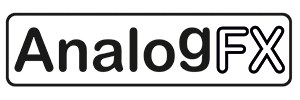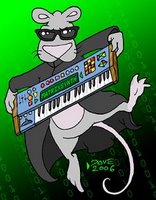Showing posts sorted by relevance for query House Synth Band. Sort by date Show all posts
Showing posts sorted by relevance for query House Synth Band. Sort by date Show all posts
Wednesday, March 19, 2025
ACID SYNTH - Our Homage To A Classic That Launched A Genre
video upload by The Crow Hill Company
Press release follows:
The Crow Hill Company creates VAULTS - ACID SYNTH as an homage to the revered Roland TB-303 Bass Line synth and associated Acid House genre
EDINBURGH, UK: music-making community tools-maker The Crow Hill Company is proud to announce availability of VAULTS - ACID SYNTH as the latest entry into its lengthening line of free and accessible virtual instruments arising from company co-founder and composer Christian Henson effectively opening his ‘vaults’ for everyone to enjoy — this time creating an homage to the revered Roland TB-303 Bass Line, launched with high hopes in 1981 as a so-called Computer Controlled bass synth by the Japanese giant of electronic musical instrument manufacturing responsible for its creation before being deemed a commercial failure and discontinued quite quickly thereafter, though it was later instrumental in driving Acid House into the musical mainstream as a whole new EDM (Electronic Dance Music) genre and associated cultural movement, the popularity of which triggered a dramatic rise in the price of used units — as of March 19…
It is fair to say that when Roland released its TB-303 Bass Line in 1981 as a so-called Computer Controlled bass synth with the intention of mimicking the characteristics of an electric bass guitar, there were far fewer tools to create electronic music available. But buyers of the TB-303 Bass Line were possibly swayed by the fact that it could be time-synced — using Roland’s proprietary five-pin DIN sync interface (later superseded by MIDI) — to its contemporarily-released Computer Controlled sibling, the TR-606 Drumatix drum machine, making for an affordable rhythm section that could conceivably fit into a small briefcase as a beautiful backing combination for the solo gigging musician, further helped by both devices being battery operated as an attractive alternative to their (included) AC adapters… or so Roland had hoped.
Though the engineers involved tried their best to imitate the sound of an electric bass guitar with the technology of the time, the TB-303 Bass Line fell short in capturing its subtleties as an instrument, sadly, so it was discontinued within a couple of years, with Roland cheaply selling off the last of the 10,000 units manufactured. Now, normally this would be the end of the story, yet something incredible happened…
Helpfully, for the benefit of anyone not already in the know, The Crow Hill Company’s Theo Le Derf picks up what is an incredible story in itself: “DJ Pierre and his band called Phuture found a used TB-303 in a music shop in Chicago for a bargain price. They started experimenting with the bass sequencer and a drum machine while playing about randomly with the filter and resonance knobs. The sound they produced was so unique and, frankly, weird that they decided to commit the jam session to tape. With the release of this experiment on Trax Records in 1987, they unwittingly birthed a new genre: Acid House. This slimy, hypnotic, subversive sound subsequently built a cultural movement, and was the soundtrack to many illegal warehouse parties of the late Eighties — all of this from a tiny synth that was used ‘incorrectly’.”
Thanks to VAULTS - ACID SYNTH’s GUI (Graphical User Interface) being as intuitive as always, correct — or ‘incorrect’ — usage of the virtual instrument in question comes quickly. “The first large dial — CUT OFF — is a 24dB lowpass filter that controls what high frequencies you cut out, and it is automatically assigned to MIDI CC1.” So starts Theo Le Derf by way of an appropriately quick guided tour, before continuing: “RESONANCE determines the peak of the filter as it opens and closes, which creates that characteristically ‘squelchy’ sound that the synth is known for. The small dials are more concentrated effects — MOD controls how much voltage is being sent to the filter, so you can get some really interesting sounds by adjusting the CUT OFF dial and MOD simultaneously; DECAY controls the decay for all the envelopes; and, of course, there is also our standard ECHO and SPLOSH, with the SPLOSH being an algorithmic imitation of a cave, which suits this synth so brilliantly.”
It is as easy as that, though Theo Le Derf is keen to add: “Another thing to mention is that you can obviously play staccato, but when you play legato — MIDI notes overlapping with one another, you get a glide between the notes. This glide effect is another characteristic that the ’303 is renowned for.”
No need, necessarily, then, to risk dropping a bank-balance-busting four-figure sum on a decades-old Roland TB-303 Bass Line when The Crow Hill Company’s ‘tribute’ truly captures the essence of its distinctive sound for all to enjoy for literally nothing. Notes Theo Le Derf, ending on a high note: “The story arc of this synth is so amazing — from its unpromising beginning to completely defining a genre and an era, it’s so
exciting to have this celebrated instrument at my fingertips for free!”
VAULTS - ACID SYNTH is free for everyone — as are all VAULTS… releases from The Crow Hill Company — from here: https://thecrowhillcompany.com/vaults/
Thursday, July 17, 2025
Pacific State/808 State - (Circuit Tracks Version)
video upload by Guinan
"This week’s track is another favourite Hacienda club track. This time from 1989 by the group 808 State (thanks again to Yves Big City @bigcitymastering for inspiring this series).
The original was actually recorded in January 1988 as a reply to the emerging Chicago House scene ‘Pacific State’ has been released in a number of guises. Sometimes just called ‘Pacific,’ others times being labelled numerically after other Roland machines eg. 707, 202. This version is a bit of an amalgamation of a few versions.
Worth noting too that Gerald Simpson ('A Guy Called Gerald') was originally one of the founding members of 808 State before leaving to start his solo career with 'Voodoo Ray'.
I was inspired to cover this after recently acquiring a copy of the Emulator II library disks (to recreate the Kraftwerk track, 'Tour De France' [posted here].
Among these disks, Disk 22 is entitled ‘Loon Garden’. Cited by many as the original source of the ‘Loon’ bird sample we all know and love, it also features a ‘shakahuchi’ sample familiar to anyone who’s ever heard ‘Sledgehammer’ by Peter Gabriel and is a historic piece of sound design. Once you’ve heard these samples you can’t help but hear them across the whole spectrum of popular music. If anyone knows who originally recorded these original samples (also in the Akai S900 library) please leave a comment?
As I started piecing this together I found this excellent video by @CaptainPikant
• Analyzing PACIFIC STATE - How to make clas... [embedded below]
which elegantly detailed the rhythm patterns used. I simplified these somewhat to fit the drum tracks into just 2 tracks to allow room for Sax and Sound Effects tracks (see below).
There is a small snatch of sampled 'sax' played on Logic sampler to fill in for the original sax solo played by Graham Massey from the band but otherwise everything was programmed and played on the Circuit Tracks. No extra synths or FX were used and the audio is recorded straight out of the stereo outs.
I hope you enjoy this track as much as I did putting it together and check back soon for more.
More details for synth nerds.
The bass patch was programmed into Synth 1 to serve as both bass and melody line. The pad sound on Synth 2 is yet another detuned sawtooth pad with chorus, but rolled off with a 24dB low pass filter to create a sound a bit more like the original Juno (said to have been sampled as a chord into a Casio FZ1 sampler).
The drum sounds are a mixture of various 909,707 and 727 Roland drum machine samples from the Reverb Drum Machines collection (normalised and filtered where required).
The Sax sound was played using the sampler instrument in Logic (and is just a preset). The 3 edited phrases were placed onto Drum pad slots and triggered using Drum 3 when required.
Another sample was a ‘bell’ patch created on the Tracks but sampled as a ‘glissando’ to double up the glissando played on the pad on Synth 2, as a break between sections of the song.
Finally Drum 4 was reserved for water and ‘Loon’ sound effects (plus additional 727 rhythm). Did you know the Loon is actually a Canadian diving aquatic bird somewhat like a duck and not at all exotic!
The tracks were as follows;
125BPM, Swing 59%
Synth 1 – bass and melody
Synth 2 – chorused pad chords
Drum 1 – 707 bass drum
Drum 2 – Hihat, Open Hat, Clap and Ride samples.
Drum 3 – Sampled sax lines (and Tracks synth 'bell' glissando sample in break)
Drum 4 – Sound effects, alternating with 727 percussion sampled bongo and muted conga sounds."
Analyzing PACIFIC STATE - How to make classic 909 Ambient House beats | Drum Patterns Explained
video upload by Captain Pikant
"Join us as we analyze and rebuild the unique rhythm of 808 State's timeless Ambient House classic layer by layer."
0:00 Introduction
0:46 Pattern 1
2:54 Loon
4:27 Pattern 2
5:26 Percussion Layer
6:22 One-Shot Patterns
6:49 End Jam
Tuesday, September 24, 2024
Roland Announces JUNO-D Synthesizer Series
video upload by RolandChannel
"The next generation of JUNO-D synthesizers is here. In this video, you’ll learn about the abundance of features that make this synthesizer the perfect partner for playing in a band and creating great-sounding content.
00:00 Intro
01:23 Intuitive Design
01:40 ZEN-Core Sound Engine
03:57 Sequencer
04:57 Sample Import
05:39 Chord Memory
05:59 Arpeggiator
07:03 Super Layers
08:39 Vocals
09:29 Connectivity
Building on a 20-year synthesizer pedigree, the versatile JUNO-D lineup offers three models featuring a pro-grade Roland sound engine and expandable sound library via Roland Cloud, all in a gig-ready design. Explore a built-in sequencer, vocal effects, and more for practicing and sketching song ideas. Then, take the stage solo or in a band with advanced performance features, pro keyboard action, and versatile connectivity for any gigging scenario. Intuitive controls and a user-friendly interface make JUNO-D the perfect entry point for piano players and new musicians ready to dive into new sounds and creative possibilities."
Roland Juno-D Synthesizer - All Playing, No Talking
video upload by Kraft Music
"Great bundle deals on Roland Juno-D:
https://kraftmusic.com/collections/ro...
Adam Berzowski jams on the Roland Juno-D8, showing a variety of sounds and features.
Juno-D is the perfect synth for gigging musicians and budding creators. This light and portable keyboard features a pro-grade Roland sound engine and an intuitive panel layout for easy operation. Play in a band or craft new songs with a massive sound library, an eight-track sequencer, and versatile connections for your gear. Perform on the move with support for USB-C mobile battery power. And stay inspired with new sounds on Roland Cloud.
Juno-D6, the most portable Juno-D model, features an expressive 61-note keyboard with synth action. Juno-D7 sports 76 synth-action keys, making it ideal for musicians who need extended range, multiple splits, and enhanced playability. The Juno-D8 88-note model features the acclaimed PHA-4 Ivory Feel keyboard with weighted hammer action, known for its exceptional response and traditional piano feel. Each Juno-D model includes the same internal features, panel layout, and connectivity. The only differences are the keyboard configuration, size, and weight.
Get more for your money with an exclusive Roland Juno-D synthesizer bundle from Kraft Music. These package deals include the accessories you'll need to get the most out of your new keyboard synth, all for one low price. If you have any questions, please contact us. Our knowledgeable Sales Advisors will be happy to assist in choosing the bundle that's right for you!"
Roland JUNO D // Review & Tutorial (JUNO D6, D7 & D8)
video upload by loopop
Press release follows:
Streamlined Keyboards with Powerful Features for Gigging Musicians and Budding Music Creators
Los Angeles, CA, September 24, 2024 — Roland announces the JUNO-D series, a new generation of synthesizer keyboards for gigging musicians and budding music creators. The JUNO-D6, JUNO-D7, and JUNO-D8 models feature light, go-everywhere designs with pro-grade sounds, easy operation, and flexible connectivity for any scenario. Each model embodies the famous JUNO-D blend of value and innovation, fusing quality Roland sound and playability with the latest creative tools for today's musicians.
JUNO-D models feature high-quality keyboards inherited from the FANTOM-0 series instruments. The 61-note JUNO-D6 and 76-note JUNO-D7 are equipped with synth-action keyboards, while JUNO-D8 offers a piano-style experience with 88 weighted-action keys and hammer action. Other than the keyboards and physical specifications, all JUNO-D models offer identical features.
Every JUNO-D is easy to transport, simple to operate, and a joy to perform with. Users can play in a band or craft new songs with a massive sound library, an eight-track sequencer, and versatile connections for all their gear. The instruments can be powered via AC or a standard USB-C mobile battery, making them ideal on-the-go solutions for stage playing, creating music content in a home studio, or performing on the street.
Built on a 20-year pedigree of streamlined stage keyboards, JUNO-D features the same ZEN-Core engine found in top-tier Roland synths. A single instrument offers a rich sonic palette for everything from cover band tunes and instrumental jams to original songs. Over 3800 sounds are ready to explore, including acoustic and electric pianos, vintage and modern synths, organs, orchestral instruments, world sounds, and more. It’s also possible to import WAV samples to recreate specific sounds on stage or spice things up with unique tones and sound effects.
Roland Cloud provides an ever-growing library of Sound Packs and Wave Expansions for further inspiration, available through membership or Lifetime Key purchases. With a free Roland Account, JUNO-D owners can access a complimentary collection of ZEN-Core Sound Packs to get started.
Players can take creative command with a generous selection of hands-on controls for real-time sound adjustment. Dedicated buttons offer direct access to 16 sound categories, while Dual, Split, and Super Layer functions are available to combine tones or assign different parts to the left and right hands. With Favorites, the user can quickly recall tailor-made sounds for every song on the setlist.
JUNO-D also provides powerful tools for developing musical ideas and playing with backing tracks. There’s an eight-track sequencer with TR-REC step input and real-time recording options, plus eight phrase pads to trigger rhythm patterns or mute tracks to shape arrangements on the fly. Arpeggiator and chord memory functions are easily accessible to generate even more creative possibilities.
JUNO-D players can add vocals to their performances using the built-in mic input and professional effects, including compression, EQ, reverb, and noise suppression. Auto pitch and vocoder effects are also available to add the modern colors heard in current pop music.
The integrated audio/MIDI USB-C interface provides class-compliant support for a driverless connection to mobile devices and computers. Users can create and perform with their favorite music production software and infuse livestreams and music videos with pristine direct sound.
Each JUNO-D model has balanced stereo audio outputs to connect with studio speakers, a stage amp, or a house PA, plus a headphone jack for quiet practice and developing musical ideas. It’s also possible to play backing tracks and songs through the JUNO-D system from a smartphone or computer via USB-C or a flash drive connected to the dedicated USB memory port.
Availability & Pricing
The Roland JUNO-D6, JUNO-D7, and JUNO-D8 are now available in the U.S. for $899.99, $1,149.99, and $1,299.99 respectively.
Wednesday, August 01, 2007
Synths in TV and Film
Note: some of the videos below have been pulled from YouTube, but I'm keeping mention of them up as a reference that they are out there.
Let the page load before scrolling - it's a long one.
Be sure to see the Synth Movies list and see the Synth Movies and Synth TV and Film labels for more.
1. Close Encounters of the Third Kind
Synths: ARP 2500 played by Phillip Dodds, head of ARP Engineering, Yamaha CS-?.
 2. Fame Synths: ARP 2600, MOOG Minimoog
2. Fame Synths: ARP 2600, MOOG Minimoog
Let the page load before scrolling - it's a long one.
Be sure to see the Synth Movies list and see the Synth Movies and Synth TV and Film labels for more.
1. Close Encounters of the Third Kind
Synths: ARP 2500 played by Phillip Dodds, head of ARP Engineering, Yamaha CS-?.
 2. Fame Synths: ARP 2600, MOOG Minimoog
2. Fame Synths: ARP 2600, MOOG Minimoog
LABELS/MORE:
ARP,
E-mu,
Eventide,
Featured,
Korg,
MOOG,
Roland,
Sequential Circuits,
Stocking Stuffers,
Synth Babes,
Synth Movies,
Synth TV and Film,
TONTO,
Video,
Yamaha
Friday, February 19, 2021
Analogue Solutions Announces Colossus #4
I almost skipped posting this as the only news here is there's a 4th production run of the Colossus. I guess it's interesting knowing how many are out there. What's also interesting is I always assumed the Colossus was either built in a limited initial run, or it was built per order only. This is a mammoth endeaver and each one costs 25,000 GBP which comes out to $35,000 US. It is $4500 less than this little Sennheiser VSM201 Vocoder!
Note, the images in this post appear to be stock. You can find demos of the Colossus in previous posts here.
Press release follows:
""Analogue Solutions announces forthcoming fourth run of Colossus supersized synth that trips back to the future of analogue
KINGSWINFORD, UK: following a showstopping showcase during its introduction at SynthFest UK 2019 in Sheffield, British boutique electronic instruments innovator Analogue Solutions is proud to announce a forthcoming fourth run of Colossus — its supersized synth that trips back to the future of analogue, albeit symbolising so much more than a powerful analogue ‘workstation’ with no fewer than 12 VCOs (Voltage-Controlled Oscillators) beating at its monumental musical heart, rather representing art, architecture, and superlative studio furniture at its hand-built best by taking its design cues from the colossal classic that is the EMS Synthi 100, although no Synthi circuit was cloned or copied in making the destined-to-be-classic Colossus fit for a new generation of high-flying owners — as of February 15…
Monday, September 14, 2020
Synthesizer Evolution: From Analogue to Digital (and Back) by Oli Freke
New synth book coming from Oli Freke, who brought us the SYNTH EVOLUTION posters.
The book is currently available for pre-order here.
The book features:
• Over 500 hand-drawn illustrations of vintage synthesizers, drum-machines, samplers and pre-modern electric instruments.
• A reference book for every synthesizer, drum-machine and sampler manufactured between 1963 and 1995 with key stats, fascinatingly quirky facts and company profiles.
• Destined to be the new ‘bible’ of synthesizer information, following in the footsteps of the classic ‘KeyFax’ series by Julian Colbeck.
• Tells the story and impact of the synthesizer on all forms of modern music and culture with geek appeal for the music fan and synth fan alike.
From acid-house to prog-rock, there is no form of modern popular music that hasn’t been propelled forwards by the synthesizer. As a result they have long been objects of fascination, desire and reverence for keyboard players, music producers and fans of electronic music alike. Whether looking at an imposing modular system or posing with a DX7 on Top of the Pops, the synth has also always had an undeniable physical presence.
This book celebrates their impact on music and culture by providing a comprehensive and meticulously researched directory of every major synthesizer, drum machine and sampler made between 1963 and 1995. Each instrument is illustrated by hand, and shown alongside its vital statistics and some fascinatingly quirky facts. In tracing the evolution of the analogue synthesizer from its invention in the early 1960s to the digital revolution of the 1980s right up until the point that analogue circuits could be modelled using software in the mid-1990’s, the book tells the story of analogue to digital - and back again.
Sunday, March 06, 2022
Tuesday, May 21, 2013
Rob Papen goes in for the soft synth kill with Predator 1.6.4

"'Rob Papen definitely makes some amazing plug-ins; we use Predator all the time, because it has such amazing sounds!'
- Dave Stewart (musician, songwriter, record producer, Eurythmics co-founder)
ECHT, THE NETHERLANDS: virtual instrument and plug-in developer Rob Papen Soundware is proud to announce availability of Predator 1.6.4, the latest update to its killer ‘phat’-sounding soft synth, as of May 21...
Rob Papen Soundware soft synths have always defined cutting-edge contemporary music production: powerful virtual instruments and plug-ins that intermix innovative design, uncompromising sound quality, and musical, production-grade presets designed to make tracks truly shine, whatever the musical genre. Predator — a ‘phat’-sounding killer soft synth that combines inspiring presets and first-class features to create the perfect ‘go-to’ synth for contemporary music production — has been successfully doing just that since its introduction in 2009, as attested to by the long list of professional producers and musicians who have happily put aside their beloved synthesizer hardware in favour of this ambient, drum ’n’ bass, club, hardstyle, hip-hop, and house music mainstay’s thousands of tailor-made presets — many made by Rob Papen himself, long since established as a sought-after sound designer in his own right, having created presets for several well-known companies before going on to found his own namesake company.
There is always room for improvement, however, and with Predator 1.6.4 the best just got a whole lot better — and bigger! First and foremost, studio-based producers and musicians maximising ‘screen estate’ to speed up DAW workflow will appreciate the appropriately- named new Big Screen graphic mode, which instantly increases the original Predator GUI by 150%. After all, making things easier on the eye clearly helps when it comes to making things easier on the ears in this day and age of visually enhancing the computer-based composition and recording process with big screens!
Of course, sound is where the art is, and, given its pedigree, Predator 1.6.4 does not disappoint with over 450 new presets to its numerically lengthened name conveniently arranged in Dance, Classic Synth, Ambient, DubStep, and Hardstyle BD Basses groupings. Indeed, Rob Papen himself is in the fortuitous position of being personally in contact with many of the world’s top producers and musicians who regularly use his company’s products and so can quickly act upon providing requested sounds and features to comfortably remain on the cutting edge of contemporary music production with Predator.
For example, a visit to the Rob Papen HQ by Headhunterz (a.k.a. Dutch hardstyle DJ/producer Willem Rebergen) — recently ranked 11th in DJ Magazine’s annual Top 100 DJs poll — resulted in the aforesaid dedicated HardStyle BD Basses sound bank and also a new distortion effect within Predator 1.6.4 — proof positive of the soft synth’s versatility. Additionally, Dutch DJ Rob Fabrie (a.k.a. DJ Headbanger, The Alienator, Gizeh, and Waxweazle) contributed the new Hardstyle Core BD Basses RF sound bank to Predator 1.6.4 while JoMal has also added his own artist bank of distinctive sounds to the update.
Existing Predator owners can simply login to their Rob Papen user account and download the Predator 1.6.4 update installer for free to access these new cutting-edge sound banks!
Other features new to Predator 1.6.4 include additional Clipper Distortion (with symmetry control) and Tape Chorus effects; Vowel, Formant 2-band, and Formant 4-band readouts (which when selected result in the Distortion dial displaying VOWEL or BANDWIDTH); and External MIDI Capture Mode (that allows a parameter to start changing as soon as the external MIDI controller reaches the displayed preset value).
Looking to add some bite to your contemporary music productions? Then look no further than Predator — now better than ever, thanks to this latest update!
Predator can be purchased as a boxed version from authorised Rob Papen dealers worldwide for €149.00 EUR (including VAT/tax)/$179.00 USD or downloaded directly from Rob Papen here: http://www.robpapen.com/buy-predator.html
Listen to examples of new Predator 1.6.4 presets here:
http://www.robpapen.com/dmdocuments/Predator1.6.4_ambient.mp3
http://www.robpapen.com/dmdocuments/Predator1.6.4_classic_synth.mp3
http://www.robpapen.com/dmdocuments/Predator1.6.4_HardStyle_BD_Basses.mp3"
Thursday, November 04, 2021
Saturday, October 12, 2024
Machina Bristronica 2024
video uploads by sonicstate
Playlist:
1. Bristronica 24: MyVolts The Silent Alchemist Nears Shipping
We caught up with Caroline who gave us the latest update to the *Silent Alchemist*, a versatile power hub designed for musicians. Featuring five isolated USB-C outputs and a high-wattage sixth output capable of delivering 100 watts, the device can power a Mac with the remaining outputs providing 20 watts each. Its independent circuits ensure noise-free operation, catering to a variety of devices including the Dreadbox module and Sysmo slope generator.2. Bristronica 24: Circuit Happy ML2M Clock Sync module updates
The Silent Alchemist uses innovative step-up power tips to convert USB-C input to the correct voltage for various devices. There's also new feature: an uninterruptible power supply allowing seamless transition between wall and power bank sources. Also introduced were updated cables, such as silver candy cords and floating ring TRS to TS cables, expanding connection flexibility. The Silent Alchemist is expected to be available in December with a competitive pricing strategy.
More Info:
https://myvolts.com/
At Bristronica 2024, we caught up with the creator of the *ML2M*, who introduced us to the latest version. The ML2M is a compact Eurorack module with Wi-Fi capabilities, allowing seamless synchronization with Ableton Live, Bitwig Studio, and iOS music apps using Ableton Link without the need for cables. It either connects to an existing network or creates its own, ensuring robust sync even in environments with unreliable Wi-Fi. The module, which retains its 2HP size, now features MIDI integration through TRS jacks. Users can access a web interface to configure each output for different clock divisions and reset triggers, making setup straightforward and flexible.3. Bristronica 24: Archaea Exchange Patching Module
Alongside the ML2M, there's also the Missing Link Junior. This desktop version offers the same functionality but in a box format, complete with MIDI and CV clock outputs. Both products are now accessible, with a starting price of $250.
At Machina Bristronica 2024, we caught up with Arran from @archaea_modular_synthesis who presented the *Exchange Module*. This programmable patcher, a year in the making, evolved from its early prototype stage to a fully functional module. Arran explained how the Exchange can route synth voices via a beam controller and three exchange modules installed within the skiff, allowing for versatile patching. Operating like a matrix patchbay, it enables users to select inputs and outputs with the push of a button, create presets, and chain multiple modules for synchronized patching.
Communication between the modules occurs over the Eurorack power bus as well as over MIDI via the USB-C connection. The Exchange maintains analog integrity, ensuring there’s no conversion latency. The forthcoming release expected in late November 2024, includes a USB-driven editor for enhanced control capabilities.
LABELS/MORE:
Archaea,
Circle Guitar,
Circuit Happy,
Componental,
Dreadbox,
Halftime,
Landscape,
Machina Bristronica,
MATRIXSYNTH Members,
Midicake,
myVolts,
News,
Patching Panda,
Toadstool Tech,
u-he
Monday, September 05, 2016
MATRIXSYNTH Review and Overview of the Novation UltraNova
Hi everyone, you might remember, back in July I posted some pics of my newly acquired UltraNova, and mentioned that review posts would eventually follow.
 Well, I’m happy to tell you the first post is here. The UltraNova is one powerful synth, so to make the overall review a bit more consumable, it will be broken up over time. This first section includes an Overview, the Oscillators, and the Mixer sections. When new sections go up, I will be sure to let you know via a new post.
Well, I’m happy to tell you the first post is here. The UltraNova is one powerful synth, so to make the overall review a bit more consumable, it will be broken up over time. This first section includes an Overview, the Oscillators, and the Mixer sections. When new sections go up, I will be sure to let you know via a new post. As with most of my reviews, I will say this one goes pretty deep into the synth engine and all editable parameters. If you are the type of person that likes to dissect and explore all of the available parameters on a synth, then this post is for you. I will touch on what each parameter does and will call out any interesting features and limitations as I do so. There are some pretty special parameters on the UltraNova that give you control beyond most other synths. Hopefully this review will give you some insight into what makes the UltraNova special.
As with most of my reviews, I will say this one goes pretty deep into the synth engine and all editable parameters. If you are the type of person that likes to dissect and explore all of the available parameters on a synth, then this post is for you. I will touch on what each parameter does and will call out any interesting features and limitations as I do so. There are some pretty special parameters on the UltraNova that give you control beyond most other synths. Hopefully this review will give you some insight into what makes the UltraNova special. Overview & Quick Comparison to Previous Nova Synths
The Novation UltraNova, released back in 2010, is a 20 voice virtual analog & wavetable synth with three oscillators, two ring modulators and one noise source per voice. The UltraNova also features two audio ins that can be assigned to the oscillator section and/or a 12-band vocoder. It’s worth noting that the Novation Nova from 1999 featured a 40-band vocoder, while the Supernova II from 2000 featured a 42-band vocoder. The UltraNova is a monotimbral synth while the 12 voice Nova was six part multitimbral and the Supernova II (24, 36, or 48 voice) was eight part multitimbral. The UltraNova supports up to 5 simultaneous effects per patch. The Nova supported 42 simultaneous effects, while the Supernova II supported up to 56. The Supernova II also supported FM synthesis while the Nova and UltraNova omit it.
The UltraNova, however, is the first Nova synth to feature wavetable synthesis. An interesting side note is that all of the oscillators on the UltraNova are actually stored as wavetables, including the standard waveforms. According to Novation, “The wavetables in the Supernova series are all calculated. The wavetables in the UltraNova, even the standard analogue waves are wavetable oscillators. This change in oscillator generation was first used on the A-Station and K-Station and subsequently in the KS series, X-Station and Xio.” This allows the UltraNova to have some advanced tricks when it comes to the oscillator section, which will be covered in detail below.
I asked Novation about the lack of FM synthesis and they told me, “FM would have been a lovely addition to the UltraNova, but it would have been asking too much of the DSP to be able to run everything the UltraNova can do and also add in FM. The wavetables were a really good way to introduce a new (to Novation) type of synthesis that is able to cater for some of the synth sounds that FM is known for and also to be able to create lush evolving pads.”
The UltraNova features two routable filters per voice with a total of 14 filter types to chose from including 6dB (no resonance), 12dB, 18dB, and 24dB with Lowpass, Bandpass and Hi-pass modes. The Nova and Supernova II lacked a 6dB mode.
As for hardware, although the UltraNova may have fewer knobs per function than its predecessors, it is extremely well laid out and super intuitive to use. Along with both keyboard velocity and aftertouch, the UltraNova has touch sensitive knobs. They literally respond to touch and can be assigned to various parameters. Worth noting, velocity is configurable, however, aftertouch is not. I found the aftertouch to be good, but it does require a little extra force than I prefer; it’s good for not accidentally triggering it, but not so good for subtle, natural performance.
Please note the above comparisons with the Nova and Supernova II were only for quick reference. The UltraNova of course is its own synth with a few tricks up its sleeves that are lacking in the original Nova line, including a level of control over the synth engine often only found in the modular realm. It sounds incredible, and for the price, currently only $599 new, it is an extremely flexible and powerful synth. You get the current top-of-the-line Novation Nova synth engine with new wavetables and more. The UltraNova is both a performance oriented synth as well as a synth programmers dream. It can be configured for easy access to specific parameters for a live situation, or you can dig as deep as you want with a clearly well thought out interface.
That said, let’s dig in.
The following review and overview will essentially go over the signal flow of the UltraNova followed by performance controls including the arpeggiator and the hardware interface. I’ll go into a little detail on what each feature can and cannot do in an attempt to give you a detailed idea of what the synth is capable of. Because my reviews tend to be a bit on the longer side, I will be posting the sections in chunks over time to make it easier on you to consume and for me to compose.
First we start with…
Sunday, March 11, 2018
Abbey Road Institute: The Moog session - The synth that shaped musical history
Streamed live on Dec 1, 2017 Abbey Road Institute
"On the 1st of December we are featuring another historic instrument that shaped musical history: The MiniMoog!
How did it become such an icon?
What makes it so special?
And why does it sound so massive?!
We got you covered. Tune in on the 1st of December.
Shaping musical history:
The Minimoog was designed in response to the use of synthesizers in rock/pop music.
Jazz composer Sun Ra was the first to use a prototype of the Minimoog in his music and Keith Emerson (musician and composer) was the first musician touring with a Minimoog, demonstrating some amazing pitch-bending techniques for the first time with many keyboard players following his example afterwards. Just like the Hammond organ (as shown in our previous event) the Moog became a serious competitor to the electric guitar, making guitarist looking for eleven on their volume control as the only way to compete. Because of its fantastic and cosmic sound, it soon was embraced by the gods of the new progressive rock with bands like Yes and Emerson Lake & Palmer.
As keyboardist of Yes, Rick Wakeman said the instrument 'absolutely changed the face of music.'
Besides progressive rock, Jazz legends like Chick Corea and Herbie Hancock added the Minimoog to their arsenal, delivering devastating jazz solos and Bob Marley introduced the Minimoog when the band first played in the UK on the BBC.
After taking the progressive rock and jazz world by storm, it made its way back towards the synthesizer’s roots, in electronic pop and experimental music. One of the most well-know band using the Minimoog for this purpose was Kraftwerk on their albums Autobahn and The Man-Machine. Shortly after that, the characteristic sound of the Minimoog became an important part of the synth-pop era and inspired an entire generation of electronic musicians like Brian Eno and Ultravox.
Since then the Minimoog transformed the music landscape of every musical genre, from the R&B/Soul of Earth Wind & Fire and the most successful recorded album of all time, Thriller from Michael Jackson, till the West-Coast sound of Dr. Dré and the industrial music of Trent Reznor.
But a major transition occurred when electronic music was slightly forced back into the underground and analog synthesizer started shaping the sound of House Music, Techno and all other genres of electronic music. This is where the Minimoog found a new homebase in the hands of producers and bands like Carl Craig, 808-state, Portishead and many more leading to the iconic sound in today’s electronic music and the production of new Moog synthesizers and soundalikes.
The original Minimoog is a true classic. But what makes the sound so special?
On the 1st of December, MarcoAntonio Spaventi (music producers, mastering engineer, analog synth evangelist and Abbey Road Institute lecturer) will give a Masterclass about the Minimoog and it’s unique sound at Abbey Road Institute Amsterdam. In order to share his love for the Moog, this masterclass will be live streamed through Facebook Live.
MarcoAntonio will talk about the differences between the original Minimoog Model D and the Minimoog Voyager, the unique features of both instruments and the technical aspects that makes it sound so special. But most important, you can hear them live including a jam with an hardware sequencer at the end of the session!
Next to the above mentioned synths, we will have a variety of other Moogs to explore the different sounds and flavours of Robert Moog’s legacy. With one very special model…
The Memorymoog!
Many say the Memorymoog is like having 6 Minimoogs stacked in one machine! While thats not entirely true it does sound like no other poly synth with a very specific and massive character. Just like the Minimoog, the Memorymoog gets his monumental sound due to certain imperfections of the instrument. A perfect example of finding perfection in imperfection! MarcoAntonio will explain you all about the different features that makes this synth so unique."
Monday, October 27, 2008
PAiA Oz As seen in DEVO's "Come Back Jonee" video

via this auction
"In 1982, a friend owed me money but I got this synth and a story instead... After high school I thumbed my nose at the regular life and moved myself to Austin, Texas which was then as it is now: the live music capitol of the world. Everybody was in a band and if you weren't in a band then someone in a band owed you money. Or both. I was both.
My friend Ryan was in a Devo/Kraftwerk ripoff band called "Light Switch" or some vaugely stupid electrical term. The band wasn't that good but they had a pretty impressive collection of synthesizers - especially for 1982 - including the first electronic drums I'd ever seen. One item in particular that I always admired in Ryan's aresenal was a lovely little Paia Oz. I liked the woopy little pitch bending pad, the teeny keyboard and the alien beep the little machine made.
 Anyway, at some point I loaned Ryan and the guys of "Light Switch" nearly one-hundred dollars to pay for rehearsal space, food, electricity and probably weed, knowing them. Of course they had no intention of ever paying me back and, predicably, push came to shove (including actual shoving) in an attempt to recover my money. So I said we could call it even if Ryan gave me his PAIA Oz. I really loved that keyboard and I'd probably been subsconsciouly angling for this outcome in the first place.
Anyway, at some point I loaned Ryan and the guys of "Light Switch" nearly one-hundred dollars to pay for rehearsal space, food, electricity and probably weed, knowing them. Of course they had no intention of ever paying me back and, predicably, push came to shove (including actual shoving) in an attempt to recover my money. So I said we could call it even if Ryan gave me his PAIA Oz. I really loved that keyboard and I'd probably been subsconsciouly angling for this outcome in the first place.And he said, "No way - Mark gave that to me." "Wait, " I said, "Mark? Like Mothersbaugh? Like Devo? That Mark?"
 Yes, that Mark.
Yes, that Mark.The story goes that in high school Ryan worked at a music shop in Houston around 1977 and who should walk into thier shop with a sweat-ruined Minimoog was none other than Mark Mothersbaugh himself. They had a show at the Texas Opry House, a Houston punk club, and Mark had ruined his Moog with sweat and possibly beer. So, Ryan cleaned up the Moog's contacts, replaced a few pots and had her booping again. Ryan was so flabbergasted that Mark was in his shop that he didn't charge Mark for the repairs and, in turn, Mark was so surprised that this kid could fix synths that he invited him to the next Devo show in San Antonio - including after-party passes. Wow - girls, booze and everything!
Ryan made the five-hour drive to the show, which was super-awesome, and the after-party, which was also super-awesome. Mark, possibly made jolly and generous by the various substances at the party kept introducing Ryan to partygoers as "the guy that saved the show." Before Ryan left for Houston, Mark gave him his PAIA Oz as a thank-you.
Well, it was a nice story and I wasn't sure if it was true. If it were in fact true, then it only made me all the more determined to let the Oz stand as repayment. And if it weren't true I wanted it anyway bacause I thought the Oz was way neato. But Ryan wouldn't budge. He wouldn't part with the synth.
 Well, then...
Well, then...I moved back to Austin a few years ago and who should I meet again but my old friend Ryan. We exchanged phone numbers and emails - and it turned out that our wives already knew each other - and bid farewell. He called me that night and said, "Hey - you still want Mark's keyboard?"
There you are. I have no idea if the lineage of this keyboard can be traced back to Devo or what. It's probably total BS, but you never know. There WAS a PAIA OZ in the Devo video "Come Back Jonee." I like the story more than I like the Oz, so bid early and often."
Update via BirdFLU in the comments: "That's a great story. But if you look at the little keyboard in the Come Back Jonee video it's the same orange/yellow color as an EML Polybox. The OZ may have been Mark's but I don't think it's what's in the video. "
Saturday, June 14, 2025
Dark & Long (Dark Train)/Underworld - Circuit Tracks Version.
video upload by Guinan
"Best known for being featured in the movie Danny Boyle movie ‘Trainspotting’ this track was first released in 1994 by the band, Underworld. It featured also in the 2012 opening ceremony of the London Olympics (which was also directed by Danny Boyle). Prior to this my wife was only slightly aware of the band, but this song (and others featured) made her an instant fan! The album it is featured on (‘Isles Of Wonder’) is her favourite and is played in our house, in her car, on her phone whenever and wherever she has a chance so this is dedicated to her. Love xx
I was inspired to do this version after PinkPantheress’s new track inspired by this song. I’ve done a version of her track too and you can find it here; [Illegal/PinkPantheress video below]
Everything you hear is programmed into, played and produced by the Circuit Tracks. No extra synths or effects were used and the audio is a straight recording from the stereo out. There are a couple of samples being played (see below) to fill out the track and some very dodgy singing of the repeated refrain ‘Dark Train’ by yours truly.
More details for synth nerds:
This was fun to do and having polished this a bit more I would like to go back and redo the PinkPantheress track….if anyone would like to see an Underworld/Pink Pantheress mashup remix (‘Illegal’ in the style of ‘Dark Train’) leave a comment below and I’ll happily oblige ;)
The sounds on this were self-created exclusively for this track. The drum samples used were my go-to 909 and 707 samples from Yves Big City’s ‘90’s House Dream’ pack. I addition I created a looped chord for the choir sound (I used Arturia’s Emulator softsynth) and I merged this chord with edited filtered sections of my voice to produce the repeated ‘Dark Train’ section.
The track layout was as follows,
Tempo 136 BPM
Synth 1 – Bass Organ patch
Synth 2 – Main synth stab/pad sound (I used a wavetable wave, ‘Tri-Saw Blend’, detuned it and added tons of reverb)
Drum 1 – 909 bass drum and rim sounds (no reverb)
Drum 2 – 909 & 707 Hihat (closed and open and some ride)
Drum 3 – 909 Claps
Drum 4 – Arturia Emulator softsynth Choir chord loop (4 bars) and merged choir/”Dark Train’ vocals all loaded onto drum pads and played as if drum sequences.
Illegal/PinkPantheress - Circuit Tracks Version
video upload by Guinan
"This week's track is so new the paint is still fresh! ‘Illegal’ by PinkPantheress. This hyperpop spin on modern UK Garage just shows how dance music evolves and constantly changes.
If you don’t know the track yet see the original here;"
PinkPantheress - Illegal (Official Video)
video upload by Pinkpantheress
Thursday, March 28, 2013
Yamaha AN1X SN NM02245
Note: links to listings are affiliate links for which the site may be compensated.

via this auction
Yamaha's first virtual analog synth. A look back at the product description and features further below.


via this auction
Yamaha's first virtual analog synth. A look back at the product description and features further below.

Wednesday, March 06, 2013
Yamaha AN1x Control Synthesizer
Note: links to listings are affiliate links for which the site may be compensated.

via this auction
A look back at the product description.
 "The classic analog synth sound is invading the airwaves and dance floors of the world and taking modern music to ever higher levels of creativity and style. And now, with the arrival of the Yamaha AN1x Control Synthesizer, you can assume control of your sound and expand your musical universe like never before. Featuring Yamaha's new Analog Physical Modeling Synthesis, which faithfully - and reliably - models analog sound digitally, the AN1x brings the fat, familiar sounds of the classic analog synths together with intuitive realtime control features in one futuristic, highly intelligent package that will change forever the way you create and perform your own music. A truly innovative, truly incredible sounding synth that's designed from scratch for techno, trance and every other type of modern dance music existing or yet tonceived, the AN1x gives you the power to create fresh and inspiring music every time you switch it on.
"The classic analog synth sound is invading the airwaves and dance floors of the world and taking modern music to ever higher levels of creativity and style. And now, with the arrival of the Yamaha AN1x Control Synthesizer, you can assume control of your sound and expand your musical universe like never before. Featuring Yamaha's new Analog Physical Modeling Synthesis, which faithfully - and reliably - models analog sound digitally, the AN1x brings the fat, familiar sounds of the classic analog synths together with intuitive realtime control features in one futuristic, highly intelligent package that will change forever the way you create and perform your own music. A truly innovative, truly incredible sounding synth that's designed from scratch for techno, trance and every other type of modern dance music existing or yet tonceived, the AN1x gives you the power to create fresh and inspiring music every time you switch it on.
 Assume Control
Assume Control
The classic analog synth sound is invading the airwaves and dance floors of the world and taking modern music to ever higher levels of creativity and style. And now, with the arrival of the Yamaha AN1X Control Synthesizer, you can assume control of your sound card and expand your musical universe like never before.
Analog Physical Modeling Synthesis
 Featuring Yamaha's new Analog Physical Modeling Synthesis, which faithfully - and reliably - models analog sound digitally, the AN1X brings the fat, familiar sounds of the classic analog synths together with intuitive realtime control features in one futuristic, highly intelligent package that will change forever the way you create and perform your own music.
Featuring Yamaha's new Analog Physical Modeling Synthesis, which faithfully - and reliably - models analog sound digitally, the AN1X brings the fat, familiar sounds of the classic analog synths together with intuitive realtime control features in one futuristic, highly intelligent package that will change forever the way you create and perform your own music.
Innovative
A truly innovative, incredible sounding synth that's designed from scratch for techno, trance and every other type of modern dance music existing or yet unconceived, the AN1X gives you the power to create fresh and inspiring music every time you switch it on.
2 Scene Memories With Realtime Morphing Between Scenes
Each AN1X voice has two Scene memories which let you store "snapshots" of specific control knob settings, to effectively give you two distinct sounds - each of which are available at the touch of a Scene switch.
Scene Control Feature
You can activate the "Scene Control" feature which lets you use the Modulation Wheel (or a Foot Controller, or any other assignable continuous controller) to morph, or cross-fade between Scenes in realtime as you play. If there's a particular sound during the morph that you want to keep, you can easily store it to one of the Scene switches for the selected voice. You can even load Scene data from another voice to the current voice.
Intuitive "Modeless" System With Assignable Control Knobs
The ANX1 basically always operates in Voice Play/Edit mode, which means that you can edit the sound as you play by turning the 8 control knobs to do things like open a filter, tweak the resonance, adjust the ring modulator, reshape the envelope, and much more.
Control Knobs
Each control knob gives you quick and easy access to one of many tone generator parameters. You can even assign a specific parameter to each knob for customized control over detailed aspects of your sound during performance. Each knob can also send Control Change messages to control specific parameters of external MIDI instruments.

via this auction
A look back at the product description.
 "The classic analog synth sound is invading the airwaves and dance floors of the world and taking modern music to ever higher levels of creativity and style. And now, with the arrival of the Yamaha AN1x Control Synthesizer, you can assume control of your sound and expand your musical universe like never before. Featuring Yamaha's new Analog Physical Modeling Synthesis, which faithfully - and reliably - models analog sound digitally, the AN1x brings the fat, familiar sounds of the classic analog synths together with intuitive realtime control features in one futuristic, highly intelligent package that will change forever the way you create and perform your own music. A truly innovative, truly incredible sounding synth that's designed from scratch for techno, trance and every other type of modern dance music existing or yet tonceived, the AN1x gives you the power to create fresh and inspiring music every time you switch it on.
"The classic analog synth sound is invading the airwaves and dance floors of the world and taking modern music to ever higher levels of creativity and style. And now, with the arrival of the Yamaha AN1x Control Synthesizer, you can assume control of your sound and expand your musical universe like never before. Featuring Yamaha's new Analog Physical Modeling Synthesis, which faithfully - and reliably - models analog sound digitally, the AN1x brings the fat, familiar sounds of the classic analog synths together with intuitive realtime control features in one futuristic, highly intelligent package that will change forever the way you create and perform your own music. A truly innovative, truly incredible sounding synth that's designed from scratch for techno, trance and every other type of modern dance music existing or yet tonceived, the AN1x gives you the power to create fresh and inspiring music every time you switch it on. Assume Control
Assume ControlThe classic analog synth sound is invading the airwaves and dance floors of the world and taking modern music to ever higher levels of creativity and style. And now, with the arrival of the Yamaha AN1X Control Synthesizer, you can assume control of your sound card and expand your musical universe like never before.
Analog Physical Modeling Synthesis
 Featuring Yamaha's new Analog Physical Modeling Synthesis, which faithfully - and reliably - models analog sound digitally, the AN1X brings the fat, familiar sounds of the classic analog synths together with intuitive realtime control features in one futuristic, highly intelligent package that will change forever the way you create and perform your own music.
Featuring Yamaha's new Analog Physical Modeling Synthesis, which faithfully - and reliably - models analog sound digitally, the AN1X brings the fat, familiar sounds of the classic analog synths together with intuitive realtime control features in one futuristic, highly intelligent package that will change forever the way you create and perform your own music.Innovative
A truly innovative, incredible sounding synth that's designed from scratch for techno, trance and every other type of modern dance music existing or yet unconceived, the AN1X gives you the power to create fresh and inspiring music every time you switch it on.
2 Scene Memories With Realtime Morphing Between Scenes
Each AN1X voice has two Scene memories which let you store "snapshots" of specific control knob settings, to effectively give you two distinct sounds - each of which are available at the touch of a Scene switch.
Scene Control Feature
You can activate the "Scene Control" feature which lets you use the Modulation Wheel (or a Foot Controller, or any other assignable continuous controller) to morph, or cross-fade between Scenes in realtime as you play. If there's a particular sound during the morph that you want to keep, you can easily store it to one of the Scene switches for the selected voice. You can even load Scene data from another voice to the current voice.
Intuitive "Modeless" System With Assignable Control Knobs
The ANX1 basically always operates in Voice Play/Edit mode, which means that you can edit the sound as you play by turning the 8 control knobs to do things like open a filter, tweak the resonance, adjust the ring modulator, reshape the envelope, and much more.
Control Knobs
Each control knob gives you quick and easy access to one of many tone generator parameters. You can even assign a specific parameter to each knob for customized control over detailed aspects of your sound during performance. Each knob can also send Control Change messages to control specific parameters of external MIDI instruments.
Wednesday, May 29, 2013
Teenage Engineering OP-1 OS Update with New DNA Synth & CWO Effect
OP-1 May 2013 OS Update - DNA and CWO
Published on May 29, 2013 djthomaswhite·83 videos
Additional videos below.
"This video is an introduction and demo of the May 2013 OS update to the amazing Teenage Engineering OP-1 synthesizer music machine. In this update two astounding new features are added in the form of the "DNA" synthesizer engine and the "CWO" Frequency Shifting Delay. The DNA engine is a noise engine capable of complete aggression and fax machine battle while at the same time possessing the ability for harmonic tonal leads and chords. The CWO FX is a Frequency Shifter with a wide range that make it possible to do phasing, flanging, chorus, tremelo, ring mod and comb filter types of sounds. You have to hear it to believe it. CWO also represents the first partnership by Teenage Engineering with an outside developer to co-op code to add to the OP-1's already heavy arsenal of sound capability. This developer is the one and only sonic master mind Magnus Lidström of Sonic Charge.
I hope you enjoy the video and the demo. There is a longer video with more blabber and explanation of what is going on here http://youtu.be/WntQUO0A6qw (Keep in mind that the visuals you see were from a beta build and show graphics which have since been refined and polished. It's actually a good preview for those of you who wonder what steps are involved in an OP-OS Beta Testing process. Soon you will be able to upload this OS yourself and I look forward to hearing (and seeing) what you can create with this as well as part of the OP community.
The Song played on the iPhone in this demo is from my band Santoma and is called "See Me." We have other songs on Large Music and are planning the release of our completed downtempo/lounge album soon.
Note: This is a pre-release build and final features may vary slightly from those shown in these clips. All music is original and no creative rights have been infringed upon in the making of this video."
And the PRESS RELEASE followed by a longer version of the video above:
"Finally here, the new OP-1 OS is ready! This time we're again adding something completely new. For the first time in the history of the OP-1 we have teamed up with an external developer and invited them to create something fresh and unique for our unit. The result of this first collaboration is something truly spectacular.
CWO - Frequency Shifting Delay

From the sonic master mind Magnus Lidström of Sonic Charge comes CWO
We first met Magnus Lidström a few years ago at a developer party here in Stockholm, Sweden. Even before that we have all been huge fans of Magnus' work, such as Microtonic, Synplant and Bitspeek. When first thinking about doing something together for the OP-1 platform we discussed what could be ported. We soon came to the conclusion that an effect would fit really well. Inspired by Magnus' own Echobode, the new CWO effect is a frequency shifting delay with a twist, modified for the OP-1 format.
'I like the limitations. The four knobs on the OP-1 have been highly optimized, so that each one produces a drastic change in sound on its own. This combination of effects is uncommon and capable of producing a wide arrange of sounds, such as phaser, flanger, tremolo and dub echo. It is really good on drums and for making simple sounds more fun and complex.'
Magnus Lidström, Sonic Charge
We made the graphics for CWO to resemble a cow, digesting and processing the audio signal through it's four stomach compartments, producing a very unique result. We hope you will like it and look forward to hearing your sonic experiments! Chew away!
DNA - CPU ID Noise Synthesis

Also new in this update is a completely new synthesis engine: DNA
The new DNA synthesis engine adds CPU ID Noise Synthesis, meaning it's a noise synth, based on the Analog Devices 64-bit Blackfin processor ID, unique to every single OP-1 unit. Every synth will therefore potentially have a slightly different sound. Sometimes tonal, sometimes not, this engine adds a truly expanded sonic pallet to the OP-1. Filter, Wave number, Wave modifier and Noise can be directly controlled via the knobs. The DNA graphics is set to resemble a Kaleidoscope, where sound and visuals are abstractly interlinked. Developed in-house.
OS intro video by DJ Thomas White
INTRO VIDEO BY DJ THOMAS WHITE [video above]
Long time OP-1 user and beta tester DJ Thomas White made a sweet video introduction and demo of the OS update.
Watch and listen as he explores the power of DNA and CWO, resulting in a wide array of sounds, all created with the new OS. Available as a free preset pack!
Thanks Thomas!"
Teenage Engineering OP-1 May 2013 OS Update
Published on May 29, 2013 djthomaswhite·83 videos
"(Introductory NOTE: This is a longer original introduction to the new OS that I put together. It has outdated graphics that have since been polished. This is one example of what takes place during beta testing. All sound features are unchanged. There is a much more in depth level of explanation of operation of the new OS here and it would be a shame to have this sit on a shelf... so here you go.)"
And one by kubistah:
Teenage Engineering OP-1 DNA Synth Visuals
Published on May 29, 2013 kubistah·13 videos
Published on May 29, 2013 djthomaswhite·83 videos
Additional videos below.
"This video is an introduction and demo of the May 2013 OS update to the amazing Teenage Engineering OP-1 synthesizer music machine. In this update two astounding new features are added in the form of the "DNA" synthesizer engine and the "CWO" Frequency Shifting Delay. The DNA engine is a noise engine capable of complete aggression and fax machine battle while at the same time possessing the ability for harmonic tonal leads and chords. The CWO FX is a Frequency Shifter with a wide range that make it possible to do phasing, flanging, chorus, tremelo, ring mod and comb filter types of sounds. You have to hear it to believe it. CWO also represents the first partnership by Teenage Engineering with an outside developer to co-op code to add to the OP-1's already heavy arsenal of sound capability. This developer is the one and only sonic master mind Magnus Lidström of Sonic Charge.
I hope you enjoy the video and the demo. There is a longer video with more blabber and explanation of what is going on here http://youtu.be/WntQUO0A6qw (Keep in mind that the visuals you see were from a beta build and show graphics which have since been refined and polished. It's actually a good preview for those of you who wonder what steps are involved in an OP-OS Beta Testing process. Soon you will be able to upload this OS yourself and I look forward to hearing (and seeing) what you can create with this as well as part of the OP community.
The Song played on the iPhone in this demo is from my band Santoma and is called "See Me." We have other songs on Large Music and are planning the release of our completed downtempo/lounge album soon.
Note: This is a pre-release build and final features may vary slightly from those shown in these clips. All music is original and no creative rights have been infringed upon in the making of this video."
And the PRESS RELEASE followed by a longer version of the video above:
"Finally here, the new OP-1 OS is ready! This time we're again adding something completely new. For the first time in the history of the OP-1 we have teamed up with an external developer and invited them to create something fresh and unique for our unit. The result of this first collaboration is something truly spectacular.
CWO - Frequency Shifting Delay

From the sonic master mind Magnus Lidström of Sonic Charge comes CWO
We first met Magnus Lidström a few years ago at a developer party here in Stockholm, Sweden. Even before that we have all been huge fans of Magnus' work, such as Microtonic, Synplant and Bitspeek. When first thinking about doing something together for the OP-1 platform we discussed what could be ported. We soon came to the conclusion that an effect would fit really well. Inspired by Magnus' own Echobode, the new CWO effect is a frequency shifting delay with a twist, modified for the OP-1 format.
'I like the limitations. The four knobs on the OP-1 have been highly optimized, so that each one produces a drastic change in sound on its own. This combination of effects is uncommon and capable of producing a wide arrange of sounds, such as phaser, flanger, tremolo and dub echo. It is really good on drums and for making simple sounds more fun and complex.'
Magnus Lidström, Sonic Charge
We made the graphics for CWO to resemble a cow, digesting and processing the audio signal through it's four stomach compartments, producing a very unique result. We hope you will like it and look forward to hearing your sonic experiments! Chew away!
DNA - CPU ID Noise Synthesis

Also new in this update is a completely new synthesis engine: DNA
The new DNA synthesis engine adds CPU ID Noise Synthesis, meaning it's a noise synth, based on the Analog Devices 64-bit Blackfin processor ID, unique to every single OP-1 unit. Every synth will therefore potentially have a slightly different sound. Sometimes tonal, sometimes not, this engine adds a truly expanded sonic pallet to the OP-1. Filter, Wave number, Wave modifier and Noise can be directly controlled via the knobs. The DNA graphics is set to resemble a Kaleidoscope, where sound and visuals are abstractly interlinked. Developed in-house.
OS intro video by DJ Thomas White
INTRO VIDEO BY DJ THOMAS WHITE [video above]
Long time OP-1 user and beta tester DJ Thomas White made a sweet video introduction and demo of the OS update.
Watch and listen as he explores the power of DNA and CWO, resulting in a wide array of sounds, all created with the new OS. Available as a free preset pack!
Thanks Thomas!"
Teenage Engineering OP-1 May 2013 OS Update
Published on May 29, 2013 djthomaswhite·83 videos
"(Introductory NOTE: This is a longer original introduction to the new OS that I put together. It has outdated graphics that have since been polished. This is one example of what takes place during beta testing. All sound features are unchanged. There is a much more in depth level of explanation of operation of the new OS here and it would be a shame to have this sit on a shelf... so here you go.)"
And one by kubistah:
Teenage Engineering OP-1 DNA Synth Visuals
Published on May 29, 2013 kubistah·13 videos
Wednesday, September 18, 2019
Meet Colossus - Analogue Solutions Rendition of the Classic EMS SYNTHI 100
You might remember Analogue Solutions EMS SYNTHI 100 for sale from previous posts. It appears they have put it to good use and designed their own version. P.S. I spotted this earlier this morning, but thanks to Soviet Space Child for sending in the link.
via Analogue Solutions:
"Available direct only... Come see Colossus at SynthFest (UK, 5/Oct)
Numbers will be limited - we are currently taking pre-orders, ready to ship in early 2020.
This is truly something special.
Price is £25K. This exclude any tax (most likely you can claim it back through your business). Shipping: Outside of UK it would need to be crated, onto a pallet, then freighted. Shipping and crating likely to be 500-1000GBP. If you aren’t too far from Calais there maybe other options.
WHAT IS COLOSSUS?
Analogue Solutions is excited to introduce Colossus, an exciting new mega-synth with a design ethos truly from the dawn of analogue synths. It is more than a powerful analogue ‘workstation’ - it is also art, architecture, exquisite studio furniture.
Design inspiration is of course from the 1970’s EMS Synthi 100, however, no circuit from the Synthi has been cloned or copied. We prefer to make our own designs. We have chosen some of our favourite circuits from our own large back catalogue synths such as Polymath, Telemark and Vostok.
Colossus is not a Synthi 100 clone - all circuits are non-EMS, Analogue Solutions’ design.
LABELS/MORE:
Analogue Solutions,
EMS,
exclusive,
exclusive2019,
New,
New in 2019,
New Synths,
new synths in 2019,
News,
SynthFest UK
Wednesday, January 09, 2019
AJH Synth Next Phase // KILLER (and quiet) phase shifting in Eurorack
Published on Jan 9, 2019 DivKidVideo
"So here we have the Next Phase from AJH Synth. A great follow up from the original Mega-Phase 12 from AJH Synth. The next phase is a dual input, stereo output phaser with selectable stages and separately selectable emphasis (resonance) paths. It's all analogue, sounds absolutely lush and is a lot quieter that the original Mega Phase, but for those looking for a bit of noise a mojo you can mix a bit of noise back in which is a nice effect.
TIMING INDEX / SECTIONS
00:09 Patch previews
00:48 What is Next Phase? Features, upgrades, Mega-Phase 12?
02:35 Basic sound demo (sounds INCREDIBLE!)
04:56 Phasing two voice melodies
06:38 Jazz ear break … guitar
06:52 Adding noise for mojo and phasing morphing wavetables with added dub chord hits
10:00 Jazz ear break … the DivKid house band
10:20 Creating subtle back layers and ambience under beats
12:16 Audio rate modulation and dissonant west coast style sequences
14:52 Jazz ear break … bet you didn’t know I could play double bass ey? ;-)
15:03 Phaser pings (like filter pings)
18:23 Phasing full ambient mixes
19:30 Jazz ear break … key tinkle time
19:45 Layering animation with the Fixed Filter Bank 914"
Tuesday, October 28, 2014
KDJ-ONE Portable Hardware Music Studio Promo Video with Sid Wilson from Slipknot
Published on Oct 27, 2014 KDJ ONE
"KDJ-ONE Official Website: http://www.kdj-one.com/
The video feature interviews with Sid Wilson (DJ Starscream) of the internationally-acclaimed metal band, Slipknot and avid user of the KDJ-ONE during its early testing stages. Watch DJ Starscream create several songs on the fly, demonstrating the device’s wide range of features."
See the KDJ-ONE channel for previous posts including video from the Musikmesse and NAMM. It appears the design has changed a bit.
And the press release (full details on the KDJ-ONE further below):

"CyberStep, Inc. (based in Tokyo, Japan) is proud to announce the release of the first promotional videos for their portable Music Studio, the KDJ-ONE. The videos feature interviews with Sid Wilson (DJ Starscream) of the internationally-acclaimed metal band, Slipknot and avid user of the KDJ-ONE during its early testing stages. Watch DJ Starscream create several songs on the fly, demonstrating the device’s wide range of features.
NEXT PAGE
HOME
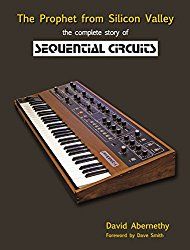
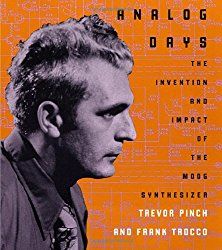
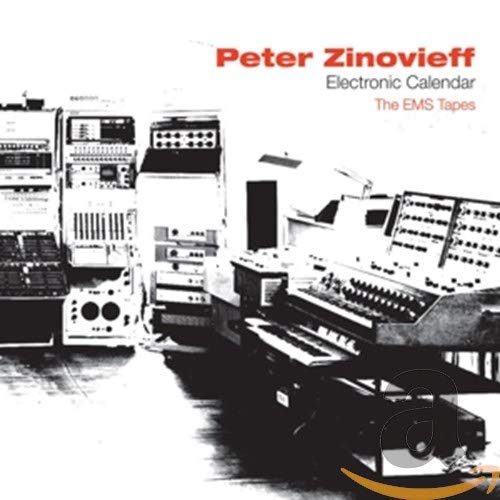
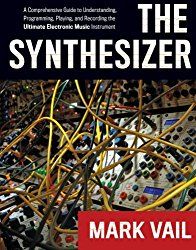
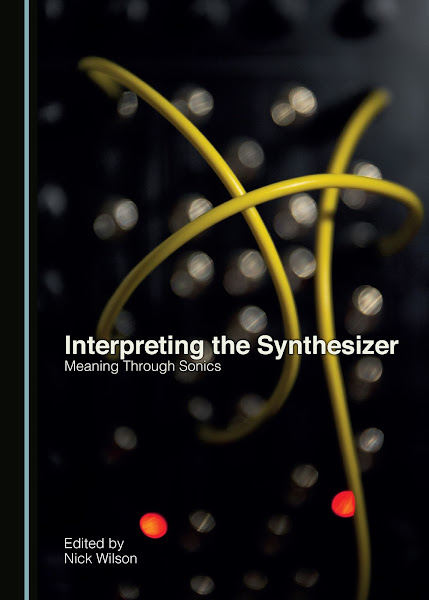
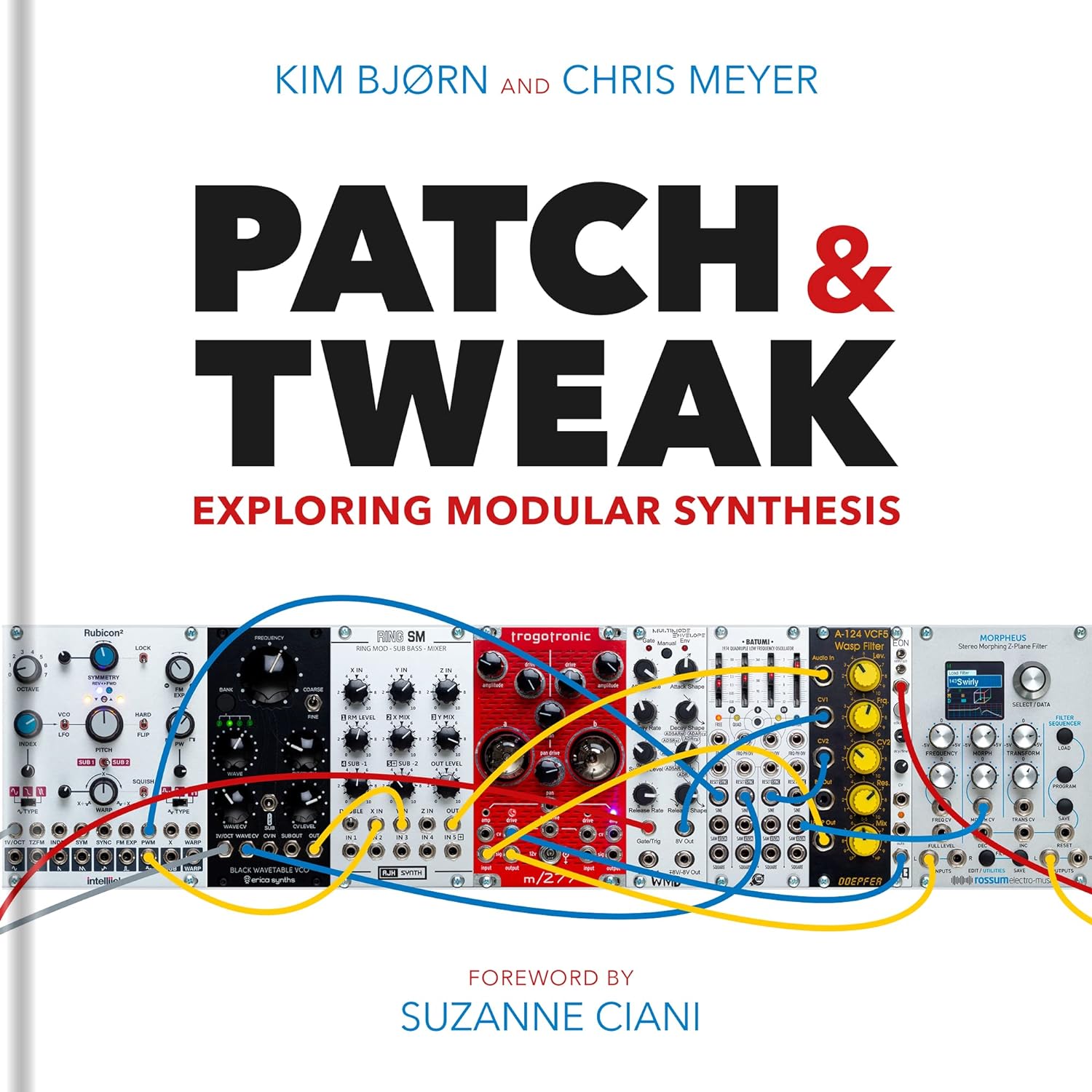

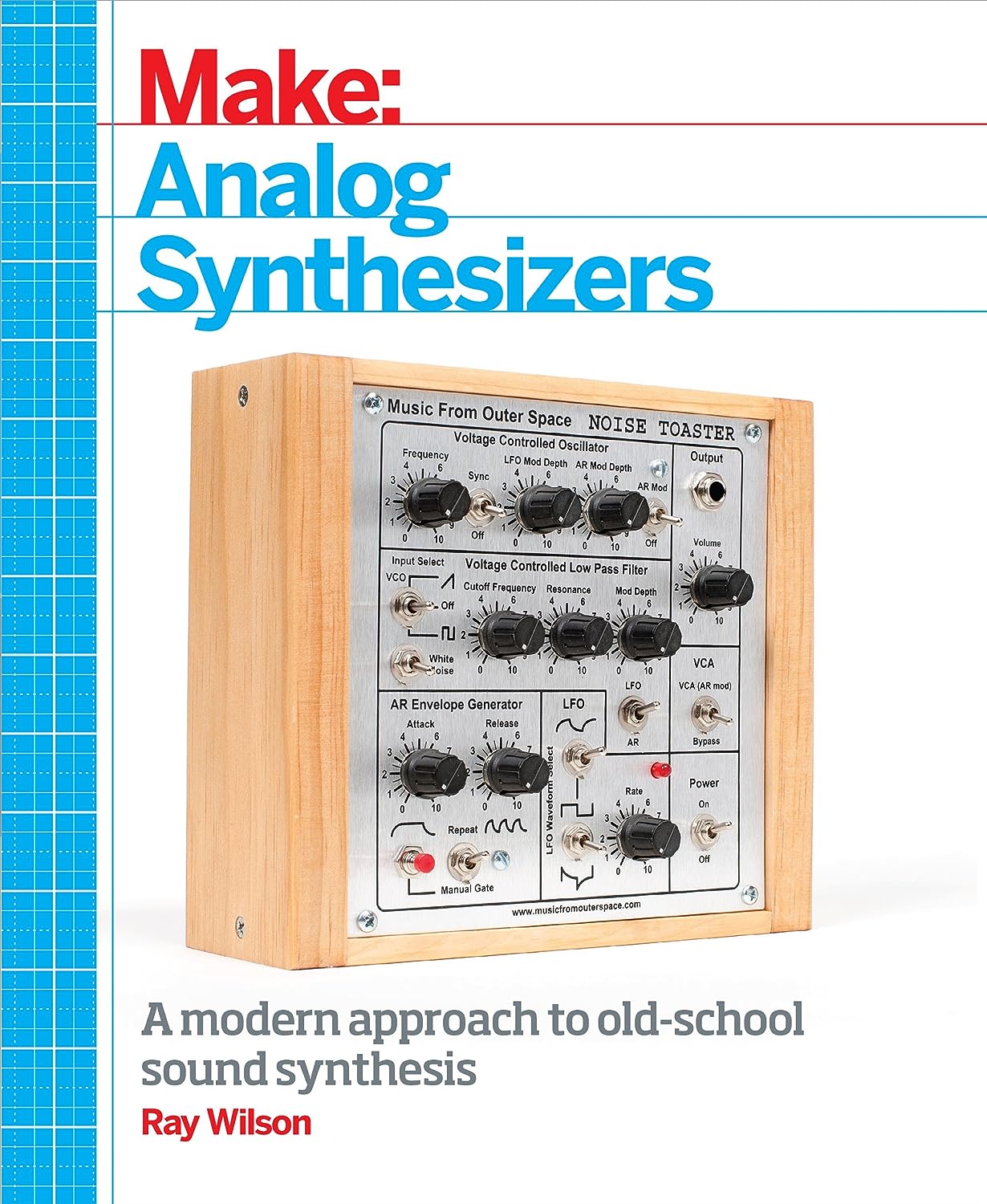
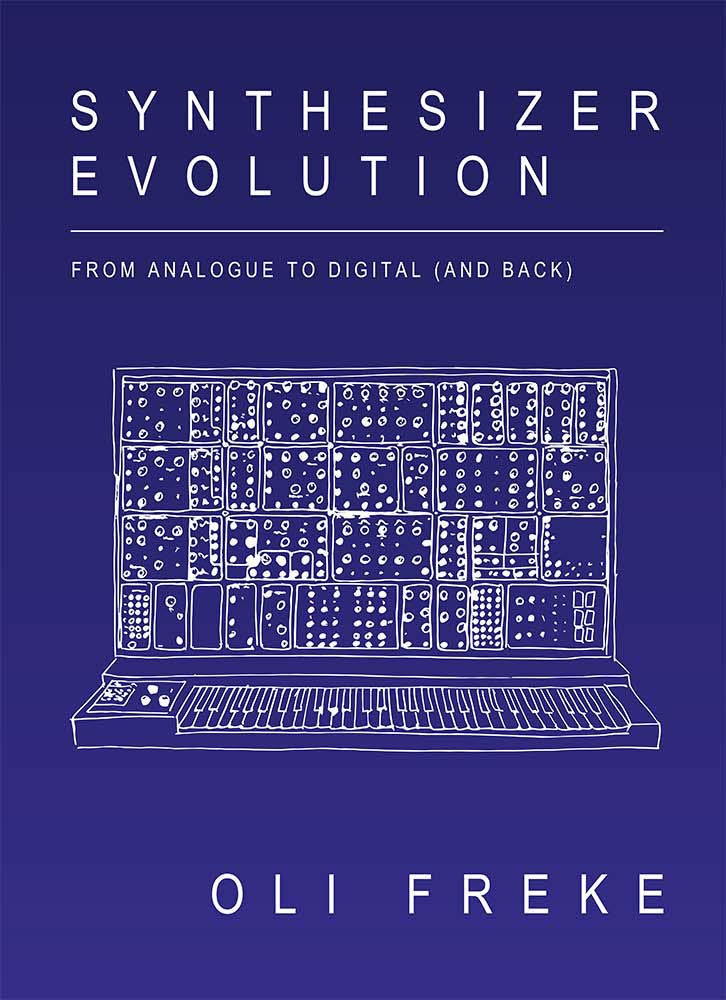
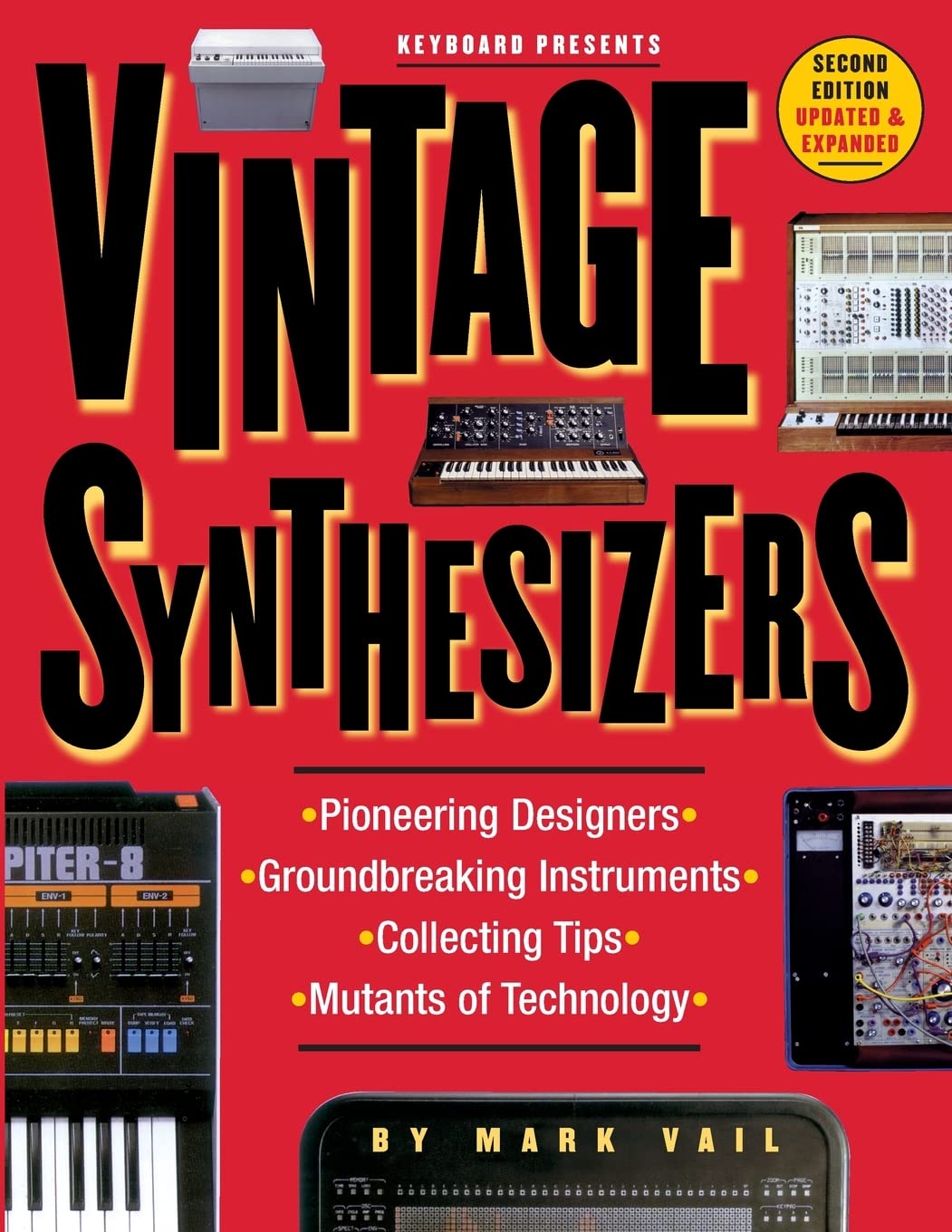
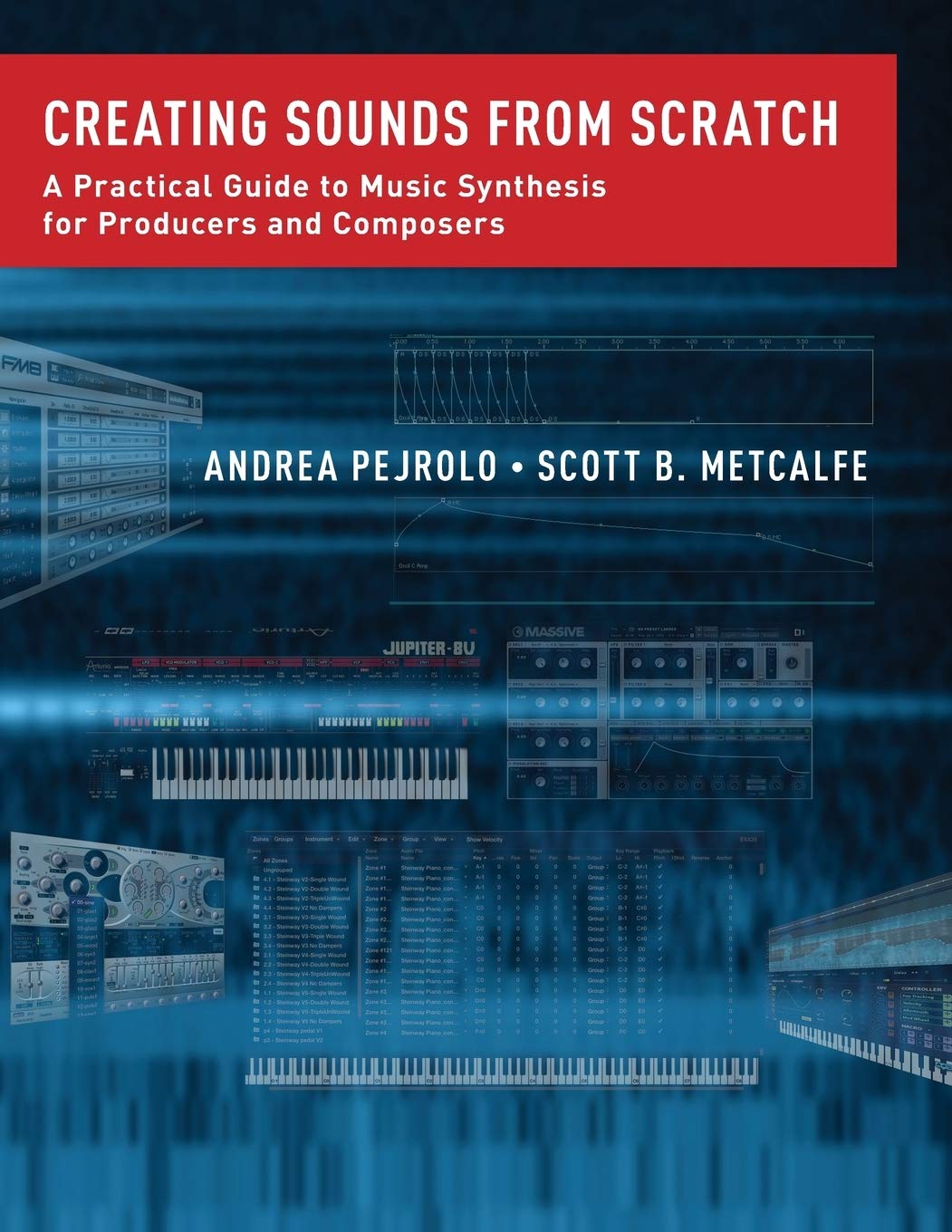
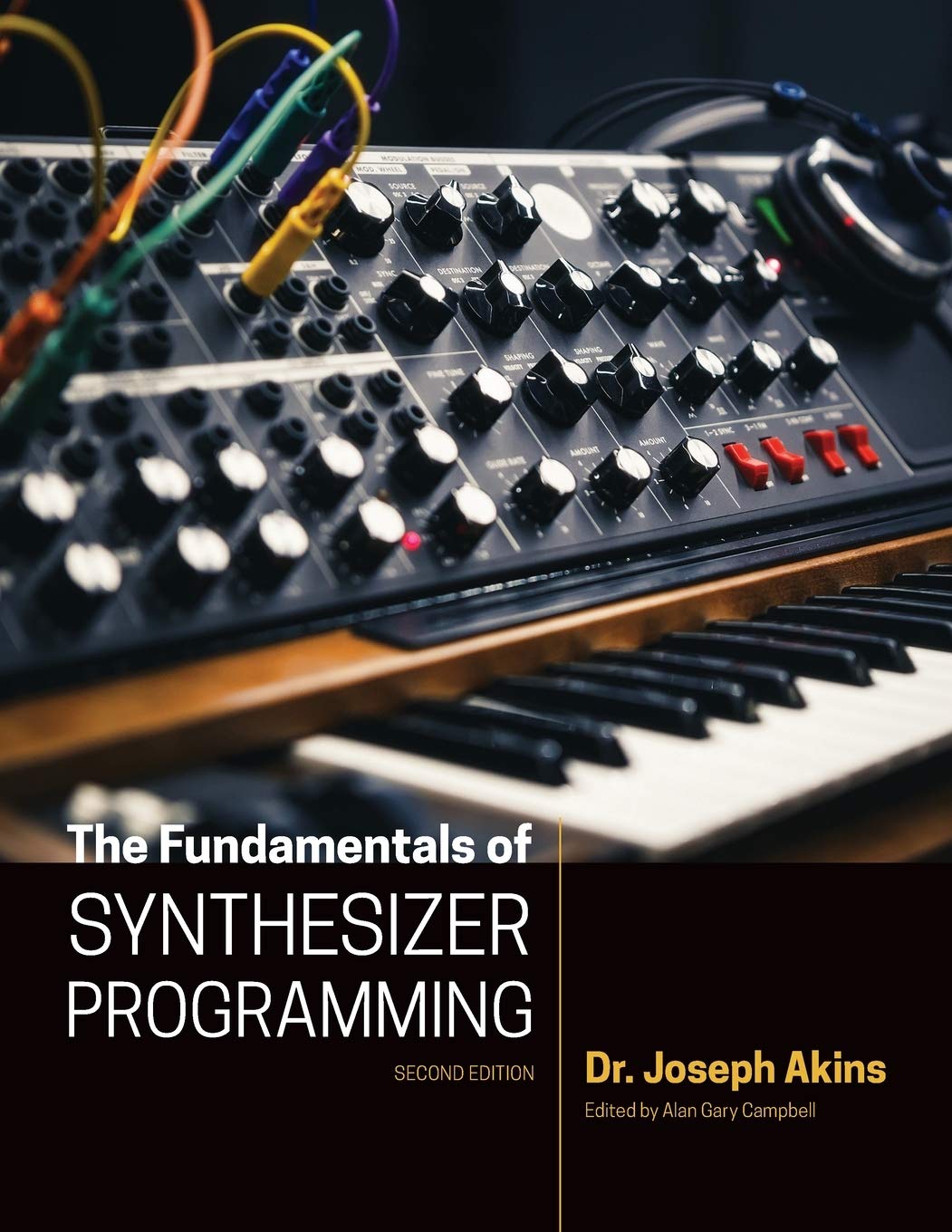

© Matrixsynth - All posts are presented here for informative, historical and educative purposes as applicable within fair use.
MATRIXSYNTH is supported by affiliate links that use cookies to track clickthroughs and sales. See the privacy policy for details.
MATRIXSYNTH - EVERYTHING SYNTH













© Matrixsynth - All posts are presented here for informative, historical and educative purposes as applicable within fair use.
MATRIXSYNTH is supported by affiliate links that use cookies to track clickthroughs and sales. See the privacy policy for details.
MATRIXSYNTH - EVERYTHING SYNTH





















